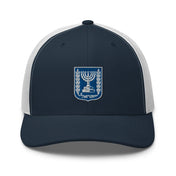Once and for all, this is how to choose shofar so meets your expecations
The shofar, a ram's horn used for thousands of years, is no ordinary instrument. It’s an ancient symbol of Jewish tradition, first mentioned in the Torah and later in the Bible, sounding the call for repentance, redemption, and even war. It's time to find how to choose shofar.
Not all shofars are created equal, and in a world full of imitations and poorly crafted versions, how can you tell if your shofar is truly top-notch?

(MagioreStock from Getty Images)
Before we get into how to judge the quality of a shofar, let’s look at its biblical significance. In the Bible, the shofar is mentioned in various pivotal moments. From the walls of Jericho falling down after the Israelites marched and blew the shofars, to the proclamation of the Jubilee year, the sound of the shofar has always been a call to action—a divine alarm clock if you will.
In modern times, shofars are mostly associated with Rosh Hashanah and Yom Kippur, the Jewish New Year and the Day of Atonement, respectively. The blast of the shofar is meant to stir the soul, calling on the Jewish people to reflect, repent, and renew their relationship with God. But none of that emotional and spiritual power can come through if the shofar isn’t of good quality. In fact, a poorly crafted shofar will sound terrible, and instead of inspiring you, it will just irritate everyone within hearing distance.
What Makes a Shofar High-Quality?
So, how do you spot a good shofar from a bad one? There are a few key factors to consider: the origin of the horn, the craftsmanship, and of course, the sound.
-
Type of Horn: Shofars are traditionally made from the horns of a ram, but they can also come from other animals, such as kudu or antelope. The ram's horn is the most biblically significant and commonly used, particularly for Ashkenazi Jews. Yemenite Jews often use the larger and more ornate kudu horn. However, regardless of the type, the horn must come from a kosher animal—this is a non-negotiable rule according to Jewish law. A shofar from a non-kosher animal is completely invalid for ritual use. A proper shofar must have been hollowed out, typically from the bone, and not artificially manipulated.
-
Craftsmanship: The process of making a shofar is delicate and intricate. The horn must be carefully hollowed out, leaving just the outer shell to create the instrument. No artificial materials should be added. A well-crafted shofar will have a smooth interior that allows air to flow freely, making it easier to blow. A cheap shofar, on the other hand, often has uneven thickness or rough patches inside, which can hinder airflow and make it difficult for anyone—expert or novice—to get a good sound.
-
Sound Quality: This is where the rubber meets the road—or rather, where the air meets the horn. A quality shofar should produce a clear, strong, resonant sound that carries. The sound should stir the soul, not sound like a dying animal! In fact, the sound of the shofar is supposed to have a variety of tones and pitches. If you blow into a shofar and it produces a flat, weak, or tinny sound, that's a red flag. A true craftsman will test the sound quality before offering it for sale. And here is a pro tip - the bigger the shofar the deeper the sound.
-
Appearance: While the sound is the most important aspect, the appearance of the shofar can also give you a clue about its quality. A good shofar will be polished to a smooth finish on the outside, but not to the point where it looks fake or overly glossy. It should still retain some of its natural horn characteristics, showing that it's an authentic piece.

(by tovfla from Getty Images Signature)
The Importance of the Mouthpiece
The mouthpiece is another critical aspect of the shofar’s quality. A shofar with a well-carved mouthpiece will allow for easier and better airflow. Some shofars come with larger mouthpieces, making it easier for beginners to blow, while more experienced users might prefer smaller, more precise openings.
The Israel Store’s Silver-Plated Shofars
When it comes to truly unique shofars, The Israel Store offers silver-plated shofars that combine traditional craftsmanship with stunning artistry. These shofars are not just ritual items; they are works of art. The silver plating adds a layer of beauty and dignity to the horn, making it a perfect piece for both ceremonial use and as a display item in your home.
What makes these silver-plated shofars stand out is their attention to detail. Each one is handcrafted and tested for sound quality, ensuring that you’re getting not only a beautiful piece but also one that will produce the desired sound when blown. The silver-plated designs often incorporate religious symbols like the Star of David or the Menorah, adding extra layers of meaning to an already significant item. If you want a shofar that stands out, both visually and audibly, The Israel Store’s silver-plated shofars are second to none.

(by John Theodor from Getty Images)
Conclusion: Choosing the Right Shofar
When it comes to picking a shofar, quality is key. This is an instrument meant to connect you to thousands of years of tradition, so cutting corners isn’t an option. Look for a shofar made from a kosher horn, crafted with skill, and tested for sound quality. And if you want to invest in something truly special, The Israel Store’s silver-plated shofars offer the perfect combination of beauty and function.
A quality shofar is not just a purchase; it's a lifelong companion for your spiritual journey. Whether you’re blowing it on Rosh Hashanah, Yom Kippur, or just practicing at home, make sure your shofar is up to the task. After all, when you sound the call, you want to be heard loud and clear.






1 comment
Hi I am from Bangalore India and love Israel and all my Brothers in Israel. Thank you for this amazing article on Shofars. Kindly let me know if you ship to India.
Regards,
Richard